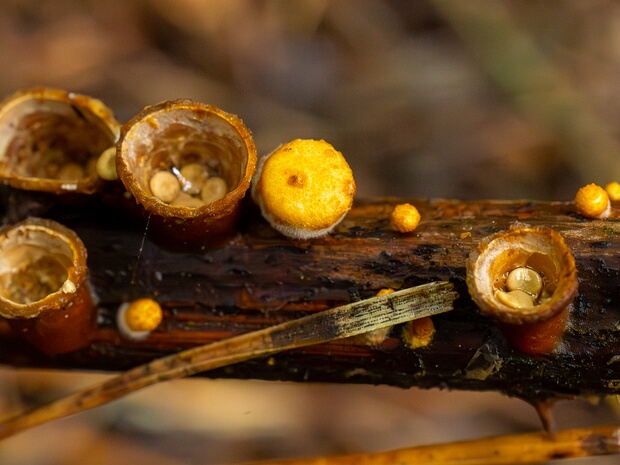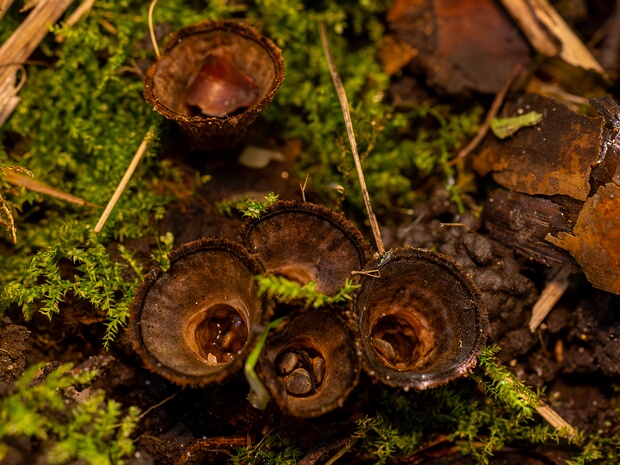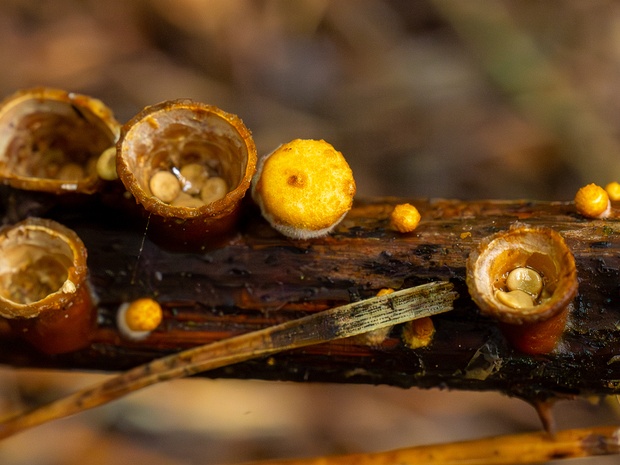Nidulariaceae - Гнездовковые - Bird's Nest Fungi - Vogelnestpilze 9/11/09—10/11/25
Nidulariaceae, commonly known as Bird's Nest Fungi or Vogelnestpilze, is a family of fungi within the order Agaricales. These fungi are small and are characterized by their distinct bird's nest-like appearance, which consists of a small, cup-like structure containing numerous small, egg-like structures called peridioles. The peridioles contain spores that are used for reproduction.
These fungi have a worldwide distribution and are commonly found in various habitats, including forests, grasslands, and gardens. They typically grow on decaying plant material, such as wood and leaf litter, and play a significant role in the decomposition process by breaking down complex organic matter.
The fruiting bodies of Nidulariaceae species are small, typically measuring less than 2 cm in diameter. The outer surface of the fruiting body is typically covered with a layer of small, hair-like structures called setae, while the inner surface is smooth and shiny.
Spores are produced within the peridioles and are released when raindrops or other external forces dislodge the peridioles from the nest-like structure. Once released, the spores are dispersed by wind, water, or animal vectors, allowing the fungi to colonize new areas.
There are several genera within the Nidulariaceae family, including Nidula, Cyathus, Crucibulum, and Mycocalia. Each genus has its unique morphological characteristics, but they all share the common bird's nest appearance.
Nidulariaceae fungi are generally considered inedible due to their small size and tough, leathery texture. They are not known to be toxic, but they are not commonly consumed by humans.
In terms of ecological importance, Nidulariaceae species play a vital role in the decomposition process, helping recycle nutrients back into the soil. This process contributes to overall ecosystem health and supports plant growth.
Research into the Nidulariaceae family has revealed the presence of various bioactive compounds with potential medicinal applications, such as antimicrobial, antiviral, and anticancer properties. However, further research is needed to fully understand the potential therapeutic applications of these compounds.
Overall, the Nidulariaceae family is a fascinating group of fungi with a unique appearance and ecological role. Their intriguing morphology and biological properties make them an interesting subject for both amateur mycologists and scientific researchers.



